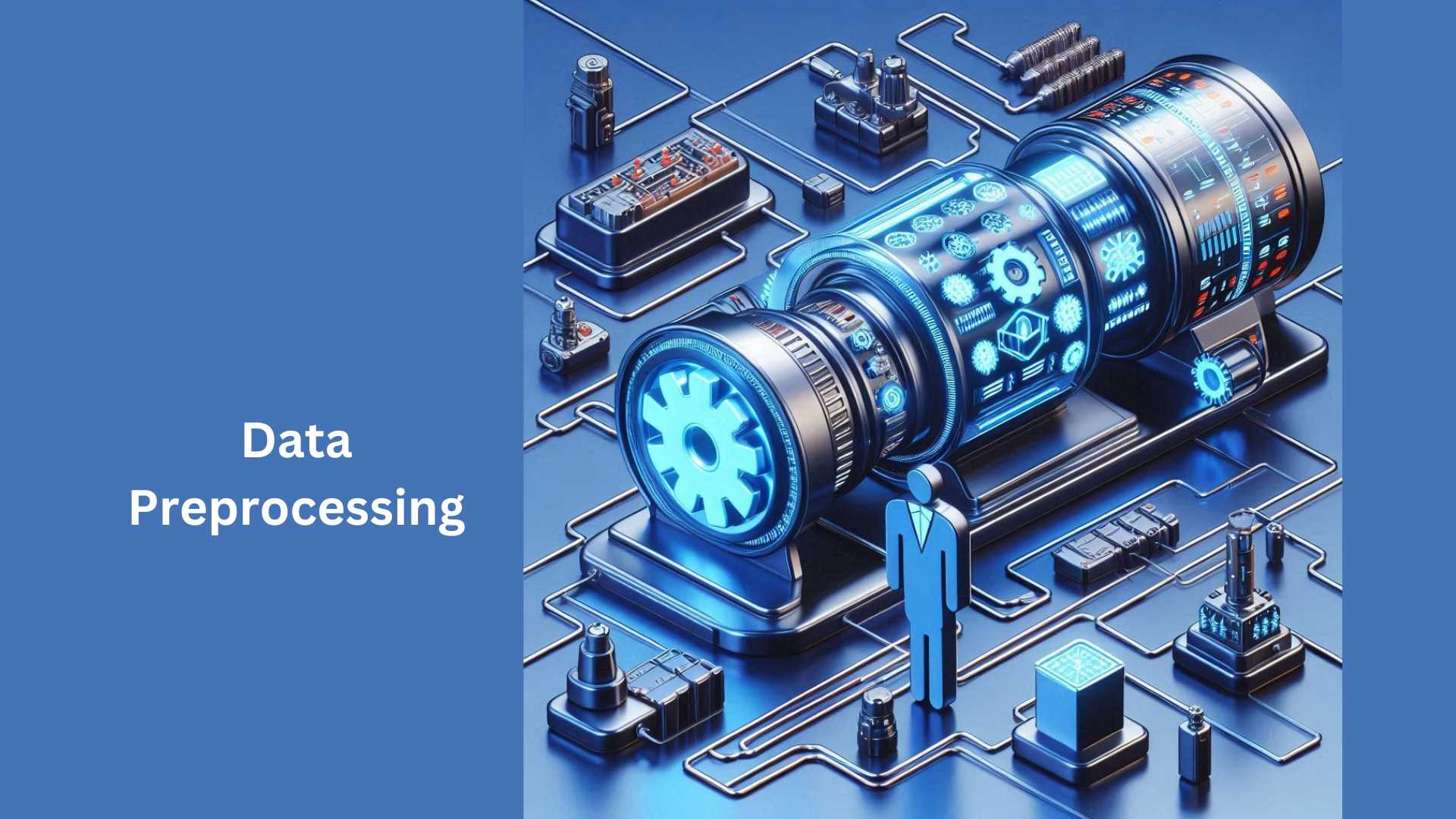The machine learning (ML) lifecycle refers to the iterative process of building, deploying, and maintaining ML models. It’s a crucial framework for organizations leveraging ML to achieve their desired business outcomes. Understanding this lifecycle empowers practitioners to follow a structured approach, optimize resource allocation, and ensure model effectiveness throughout its lifespan.
Dig into the key stages of the ML lifecycle, highlighting their purpose and emphasizing their interconnectedness. By fostering a strong understanding of this framework, individuals and teams can navigate the complexities of ML development and deployment with greater efficiency and confidence.
Stages Of The Machine Learning Lifecycle
1. Problem Definition and Data Acquisition
- Defining the Problem
- Data Acquisition
2. Data Understanding and Preprocessing
- Data Exploration
- Data Preprocessing
3. Model Selection and Feature Engineering
- Choosing the Right Algorithm
- Feature Engineering
4. Model Training and Evaluation
- Model Training
- Model Evaluation
5. Model Deployment and Monitoring
- Model Deployment
- Model Monitoring
The ML lifecycle typically consists of six core stages, each playing a vital role in the overall success of the model:
1. Problem Definition and Data Acquisition:
- Defining the Problem: The initial stage begins with a clear understanding of the business problem you aim to address with ML. This involves identifying specific goals, success metrics, and potential biases that might exist.
- Data Acquisition: Once the problem is defined, relevant data needs to be acquired. This could involve collecting data internally, sourcing it from external vendors, or generating synthetic data. Data quality is paramount at this stage, as it directly impacts model performance and interpretability.
2. Data Understanding and Preprocessing:
- Data Exploration: Here, you delve deeper into the collected data, analyzing its characteristics (distribution, missing values, outliers) and ensuring its alignment with the problem definition.
- Data Preprocessing: This stage involves cleaning and preparing the data for model training. It encompasses techniques like handling missing values, normalization, feature scaling, and encoding categorical variables.
3. Model Selection and Feature Engineering:
- Choosing the Right Algorithm: Selecting the most suitable algorithm for your problem is crucial. This decision is primarily influenced by factors like the data type (structured, unstructured), problem type (classification, regression), and desired model interpretability.
- Feature Engineering: This stage involves creating new features from existing ones to improve model performance and interpretability. Feature selection techniques help identify the most relevant features, while feature transformation techniques can create new features that better capture underlying relationships within the data.
Maximizing Models: Selection to Improvement
4. Model Training and Evaluation:
- Model Training: The selected algorithm is trained on the prepared data. This involves dividing the data into training and testing sets, feeding the training set to the algorithm, and iteratively updating the model parameters to minimize the error on the training data.
- Model Evaluation: Trained models are evaluated using various metrics (accuracy, precision, recall, F1-score) on the held-out testing set. This assessment helps gauge the model’s generalization ability and identify areas for improvement.
5. Model Deployment and Monitoring:
- Model Deployment: Once the model is trained and evaluated, it’s deployed into production to serve real-world applications. This involves integrating the model into an existing system or creating a new one to handle predictions.
- Model Monitoring: Deployed models require continuous monitoring to ensure they maintain their intended performance. This involves tracking key metrics, detecting potential performance degradation, and taking necessary actions (retraining, fine-tuning) to address them.
Benefits of Machine Learning Life Cycle Frame Work Adaptation
A deep understanding of the machine learning (ML) lifecycle offers a multitude of advantages for individuals and organizations seeking to leverage the power of ML effectively. Here’s a further elaboration on the previously mentioned benefits:

1. Structured Approach:
- Reduced Errors and Omissions: By providing a clear roadmap, the ML lifecycle minimizes the risk of overlooking crucial steps or tasks during the development process. This comprehensive approach helps ensure that all essential aspects of model creation and deployment are systematically addressed, leading to a more robust and reliable model.
- Improved Communication and Collaboration: The defined stages of the lifecycle act as a common language for different stakeholders involved in the project (data scientists, engineers, business representatives). This shared understanding facilitates clear communication, collaboration, and alignment on project goals and expectations throughout the development process.
2. Resource Optimization:
- Efficient Allocation of Time and Effort: By understanding the dependencies between each stage, resources can be allocated strategically. This allows teams to focus on the most critical tasks at each stage, avoiding unnecessary efforts that might not yield significant improvements.
- Improved Project Scheduling and Planning: The lifecycle framework provides a base to estimate the time and effort required for each stage, enabling more accurate project planning and scheduling. This foresight is crucial for setting realistic deadlines, managing expectations, and ensuring project success.
3. Improved Model Performance:
- Early Identification of Issues: The iterative nature of the lifecycle allows for continuous feedback throughout the process. By evaluating the model at various stages, potential issues (data quality problems, inappropriate algorithms, overfitting) can be identified and addressed early on, preventing them from propagating through later stages and negatively impacting the final model performance.
- Continuous Learning and Improvement: The lifecycle fosters a continuous learning environment. Insights gained from each stage can be utilized to refine earlier stages in subsequent iterations. For example, analyzing model performance during evaluation can inform data exploration and feature engineering techniques in future iterations, leading to gradual improvement in model accuracy and generalizability.
4. Increased Transparency and Trust:
- Explainable AI and Interpretability: By understanding the steps involved in model development and the rationale behind each choice, stakeholders can gain a better understanding of how the model arrives at its predictions. This transparency is crucial for building trust in the model and its decision-making capabilities, particularly for high-stakes applications where explainability is critical.
- Identification and Mitigation of Bias: The lifecycle framework highlights the importance of considering potential biases throughout the development process. By acknowledging and addressing these biases proactively, organizations can build more ethical and fair models that are less susceptible to discriminatory or unfair outcomes.
Ultimately, understanding the ML lifecycle empowers individuals and organizations to:
- Streamline the development process: Ensure efficiency and effectiveness through a structured approach.
- Deliver high-quality models: Reduce errors, improve performance, and build trust through transparency.
- Make responsible and ethical use of ML: Mitigate potential pitfalls and build fair and unbiased models.
By embracing this understanding and implementing the best practices associated with each stage of the life cycle, organizations can maximize the value proposition of ML and achieve their desired business objectives.
Interconnectedness Of The ML lifecycle Stages
The interconnectedness of the stages in the ML lifecycle goes beyond the examples previously mentioned. Here’s a deeper exploration of the interdependencies between the listed stages, highlighting how insights from one stage can influence and potentially require revisiting another:
1. Data Understanding and Model Selection:
Data Distribution and Algorithm Choice: Exploring data distribution during data understanding can reveal insights into the underlying relationships between features and the target variable. This information can be crucial for choosing an appropriate algorithm. For example, if the data exhibits non-linear relationships, selecting a linear regression model might not be optimal. Instead, exploring algorithms like decision trees or support vector machines (SVMs) might be more suitable.
Data Imbalance and Model Optimization: Imbalanced data, where one class significantly outweighs others, can lead to biased model predictions. Identifying such imbalances during data understanding might necessitate employing specific techniques like oversampling or undersampling to address the imbalance before model selection.
2. Feature Engineering and Model Training:
Feature Importance and Training Performance: Feature engineering techniques like feature selection can reveal which features hold the most predictive power for the target variable. Focusing training efforts on these features can improve model performance and efficiency by reducing training time and computational resources.
Feature Creation and Model Interpretability: Feature engineering can also involve creating new features by combining existing ones. While this can improve model accuracy, it’s crucial to consider the impact on interpretability. New features might be more complex and harder to understand, potentially hindering human understanding of the model’s decision-making process.
3. Model Evaluation and Deployment Monitoring:
- Metrics Thresholds and Monitoring Thresholds: Choosing appropriate evaluation metrics during the early stages is crucial. These metrics should align with the business objectives and guide for setting performance thresholds for deployment and ongoing monitoring. For example, if an accuracy of 90% is deemed acceptable during evaluation, this metric becomes a benchmark for monitoring deployed models. Any significant deviations from this threshold might indicate performance degradation requiring further investigation and potential retraining.
- Real-World Data and Model Drift: Even well-performing models during evaluation can deteriorate in real-world scenarios due to factors like concept drift, where the underlying data distribution changes over time. Ongoing monitoring in the deployment stage can identify such drifts and trigger revisiting the evaluation stage with new data to assess the model’s current performance and determine if retraining is necessary.
4. Iteration and Improvement:
- Continuous Learning: The ML lifecycle should not be considered a linear process. Based on performance monitoring results, the model might need iterative refinement. This may involve revisiting earlier stages (data exploration, feature engineering) or retraining the model with additional data or updated hyperparameters.
Additional Points to Consider:
- Iteration and Feedback Loop: The interconnectedness of the stages fosters a continuous feedback loop. Insights gleaned from later stages, like deployment monitoring, can be fed back to earlier stages, prompting revisiting and refinements. This iterative process helps ensure the model’s ongoing effectiveness and adaptability to dynamic environments.
- Collaboration and Communication: Effective communication and collaboration between individuals involved in different stages of the ML lifecycle are crucial. Recognizing these interdependencies ensures timely information sharing and facilitates informed decision-making at each stage.
By understanding and leveraging the interconnectedness of the stages, practitioners can navigate the ML lifecycle more efficiently, ensuring models are not only well-developed but also maintain their effectiveness over time.
Challenges and Best Practices in the Machine Learning Lifecycle
While the ML lifecycle provides a valuable framework, it’s not without its challenges. Here are some common hurdles encountered during each stage and best practices to navigate them:
1. Problem Definition and Data Acquisition:
- Challenge: Defining an ambiguous or poorly scoped problem can lead to irrelevant models that miss the mark.
- Best Practice: Ensure clear stakeholder alignment on the problem, desired outcomes, and potential biases.
2. Data Understanding and Preprocessing:
- Challenge: Working with data inconsistencies, missing values, and poor quality can significantly impact model performance.
- Best Practice: Employ robust data cleaning and preprocessing techniques, document data cleansing steps thoroughly, and leverage data lineage tools to track data origin and transformations.
3. Model Selection and Feature Engineering:
- Challenge: Choosing an inappropriate algorithm or relying solely on “black box” models can hinder interpretability and limit trust in model decisions.
- Best Practice: Explore a variety of algorithms, consider incorporating explainable AI techniques, and involve domain experts in feature selection and interpretation.
4. Model Training and Evaluation:
- Challenge: Overfitting or underfitting the model can lead to poor performance in the real world.
- Best Practice: Utilize techniques like cross-validation to assess model generalizability, employ early stopping to prevent overfitting, and carefully select performance metrics aligned with the business problem.
5. Model Deployment and Monitoring:
- Challenge: Models can degrade in performance over time due to data shifts or concept drift.
- Best Practice: Continuously monitor deployed models, establish alerting systems for performance degradation, and have a redeployment strategy in place for updating or retraining models as needed.
6. Iteration and Improvement:
- Challenge: Failing to adapt and refine models based on real-world performance can lead to suboptimal results.
- Best Practice: Establish a feedback loop to capture insights from model monitoring and incorporate them into revisions of earlier stages in the life cycle.
Conclusion
Navigating the ML lifecycle effectively goes beyond technical expertise; it’s a strategic investment for organizations seeking to leverage the power of data. By adopting a structured and iterative approach, businesses can unlock a plethora of benefits, including enhanced decision-making, streamlined operations, a competitive edge through innovation, improved customer experiences, and adaptability to dynamic environments. However, implementing the ML lifecycle responsibly requires a focus on ethical considerations, domain expertise, and model explainability. Embracing these principles empowers organizations to unlock the vast potential of ML within a responsible framework, driving them toward sustained success in the data-driven age.
Additional Considerations:
- This provides a broad overview of the ML lifecycle. Specific details and techniques employed within each stage may vary depending on the chosen ML framework, problem domain, and project complexity.
- Continuous learning and staying informed about emerging trends and advancements in the ML landscape are crucial for success in this rapidly evolving field.
FAQ’S
1. What is the machine learning lifecycle, and why is it important?
The machine learning lifecycle refers to the iterative process of building, deploying, and maintaining ML models. It’s crucial for organizations as it provides a structured approach to ML development, optimizing resource allocation and ensuring model effectiveness throughout its lifespan.
2. What are the key stages of the machine learning lifecycle?
The key stages include problem definition and data acquisition, data understanding and preprocessing, model selection and feature engineering, model training and evaluation, model deployment and monitoring, and iteration and improvement.
3. How does understanding the interconnectedness of stages benefit ML practitioners?
Understanding the interconnectedness helps practitioners navigate the machine learning lifecycle more efficiently. Insights from one stage can influence and require revisiting another, fostering a continuous feedback loop for model improvement.
4. Why is continuous monitoring important in the machine learning lifecycle?
Continuous monitoring ensures deployed models maintain their intended performance over time. It helps detect issues like concept drift and performance degradation, prompting necessary actions such as retraining or fine-tuning, ensuring the model’s effectiveness throughout its lifecycle.
5. How does the machine learning lifecycle facilitate collaboration within teams?
The defined stages of the machine learning lifecycle act as a common language for different stakeholders involved in the project. This shared understanding fosters effective communication, collaboration, and alignment on project goals and expectations, enhancing overall project efficiency and success.









